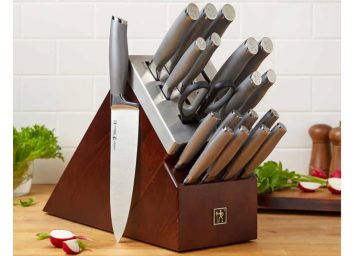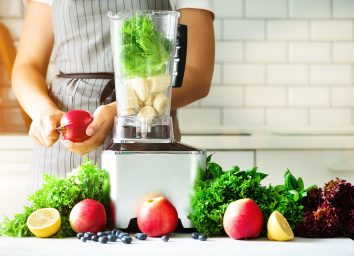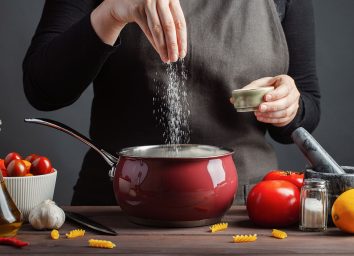12 Ways You're Ruining Your Kitchen Knives
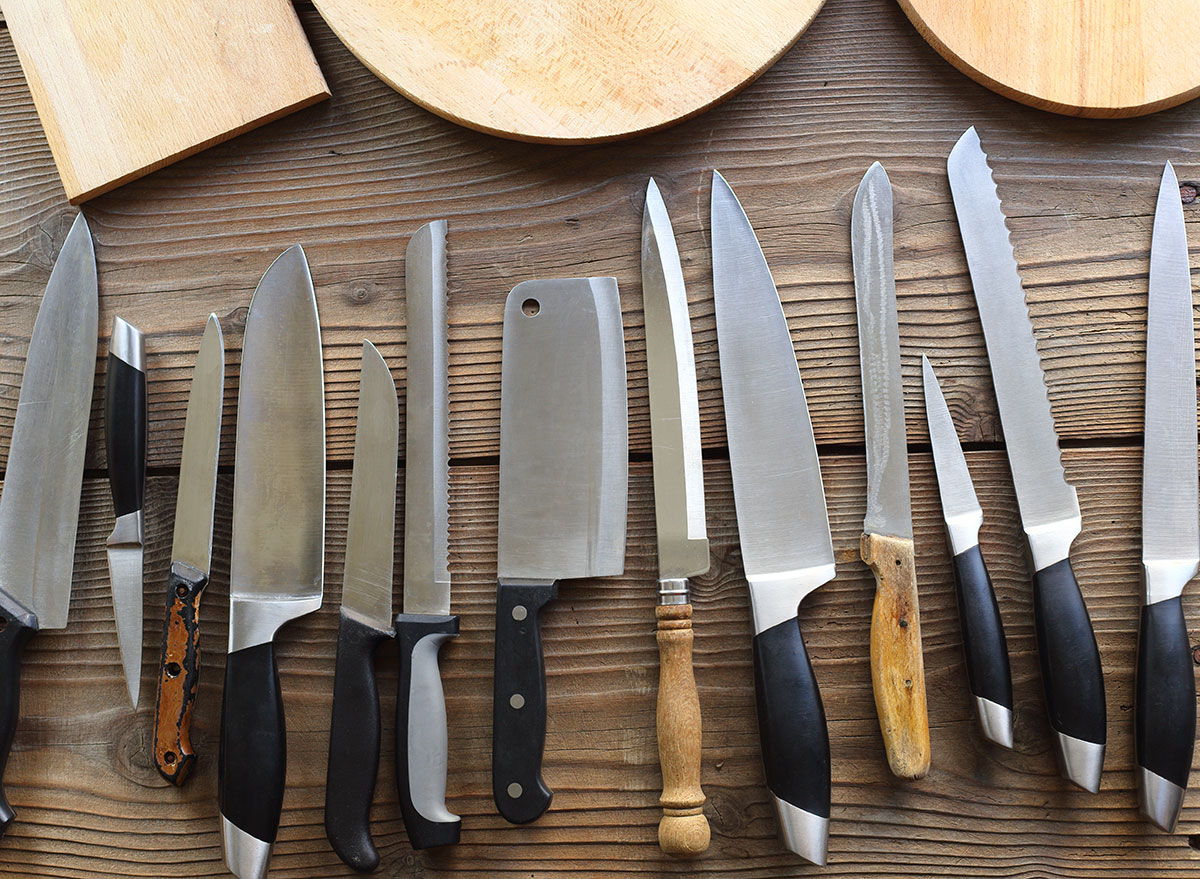
Your fully-stocked kitchen knife block looks stylish, but can what's stored inside really cut it? And—if we're being frank here—there might just be a good chance you're making common mistakes with your kitchen knives that are actually harming the cutlery and your future cooking adventures in the long run.
"Whether you're a professional chef, a home cook, or somewhere in the middle, a knife is arguably the most important tool in your kitchen," says Jamie Palafox, senior evaluator at Auguste Escoffier School of Culinary Arts. "Though knives can often be incredibly well-built and sturdy workhorses, taking proper care of your knife is what will ensure that it works for you day in and day out."
Make the most of your mise en place MVP with these tips from sharp chefs and cooking pros so you don't end up unintentionally ruining your kitchen knives.
Mistake: Allowing your kitchen knives to get too dull.
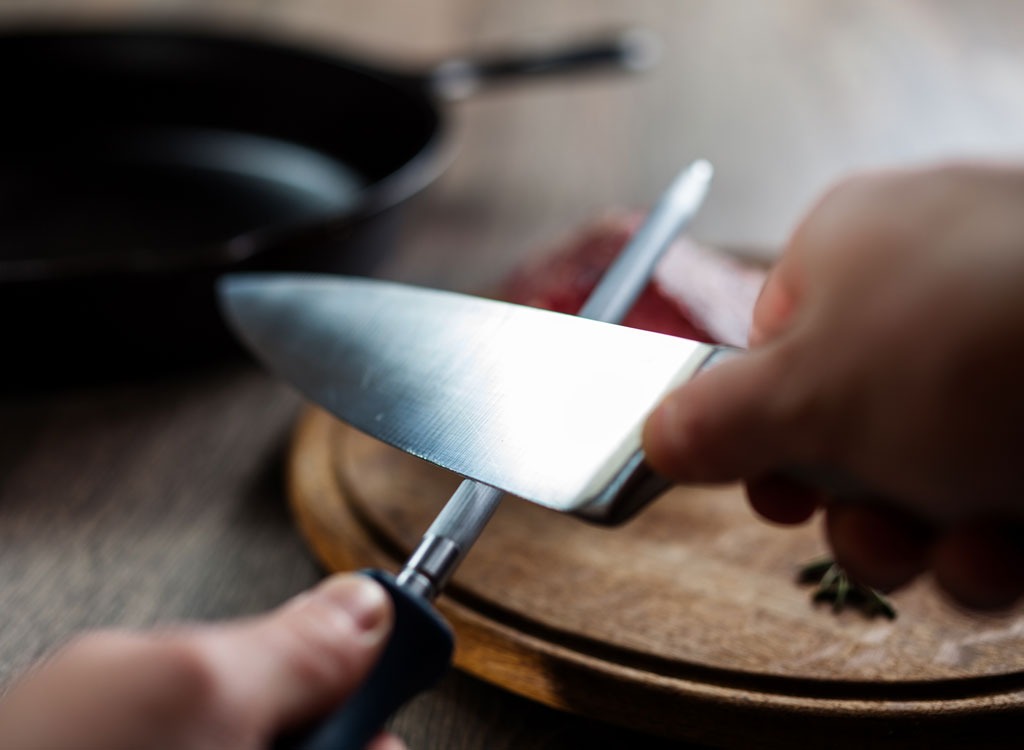
If you're a novice kitchen knife-wielder, you may think that a dull tool is safer than a sharp one in case you nick a finger, but that's not the case.
"It's actually safer to use a sharp knife, because you don't have to exert extra force to get it through the food and it makes cleaner, more precise cuts," says Hannah Crowley, executive editor of tastings and testings at America's Test Kitchen in Brookline, Massachusetts. "Any time you notice your blade feeling dull—it's harder to push through the food, it squishes it instead of cutting in, or it doesn't go where you want it to—it's time to sharpen."
How do you easily tell if your knives are still in good shape?
Try the paper test:
- Find a basic piece of white copy paper.
- Pinch the top edge firmly.
- Pull your blade through the paper, from heel to tip of the knife, slicing downwards.
Your key:
- Sharp: Slices right through
- Dull: Tears the paper
- Very dull: Won't slice paper at all
And there you have it! But if you happen to discover your knives are dull and in need of sharpening, just don't overdo it, Palafox warns.
"When a knife is sharpened, layers of the metal are stripped away to reveal a sharp edge. This process is, of course, beneficial to your knife, as you will end up with a wicked sharp edge, but sharpening your knife too frequently will change the weight of your blade and can make the tip of your knife more susceptible to chipping," he says.
Mistake: Skipping the hone.
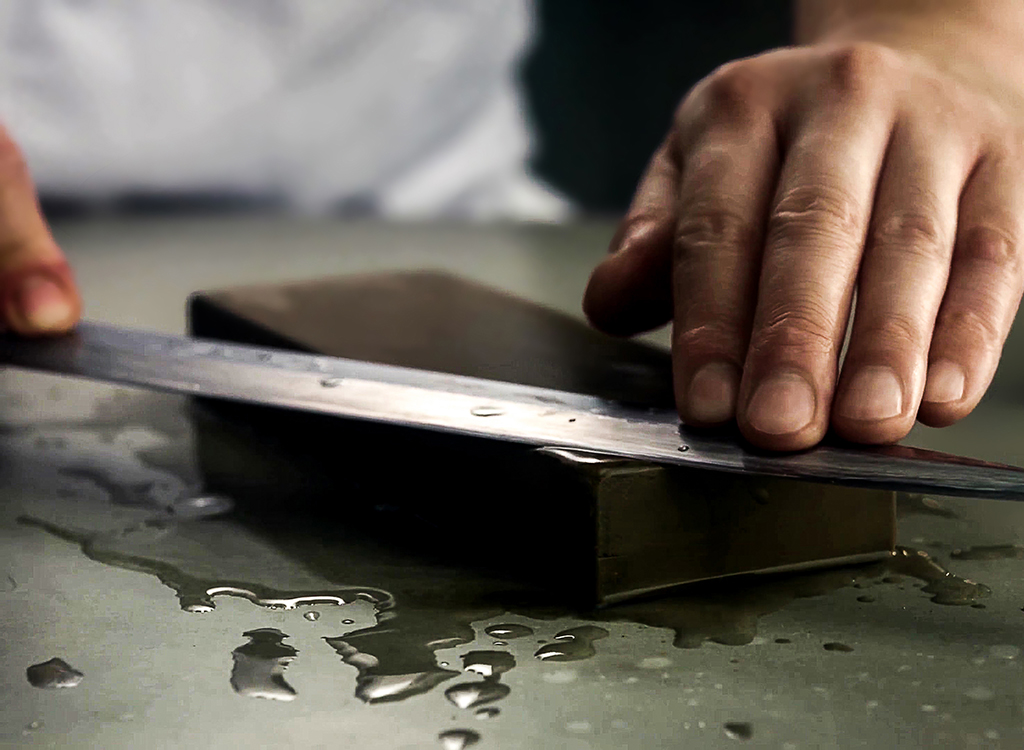
This isn't just a strategy chefs use to look fancy. It prevents you from having to sharpen your knives too often, so in the long-run they'll last longer.
"When you hone your knife, you are reversing the bent edge by knocking the sharp edge of the knife back into place. Sharpening requires layers of metal to be stripped from the blade of your knife to revive the sharp edge and isn't something you will need to do regularly if you hone your knife often. Keep your knife slicing through tomatoes with ease by honing often, and you won't need to sharpen it," Palafox says.
Mistake: Not gripping your kitchen knives correctly.
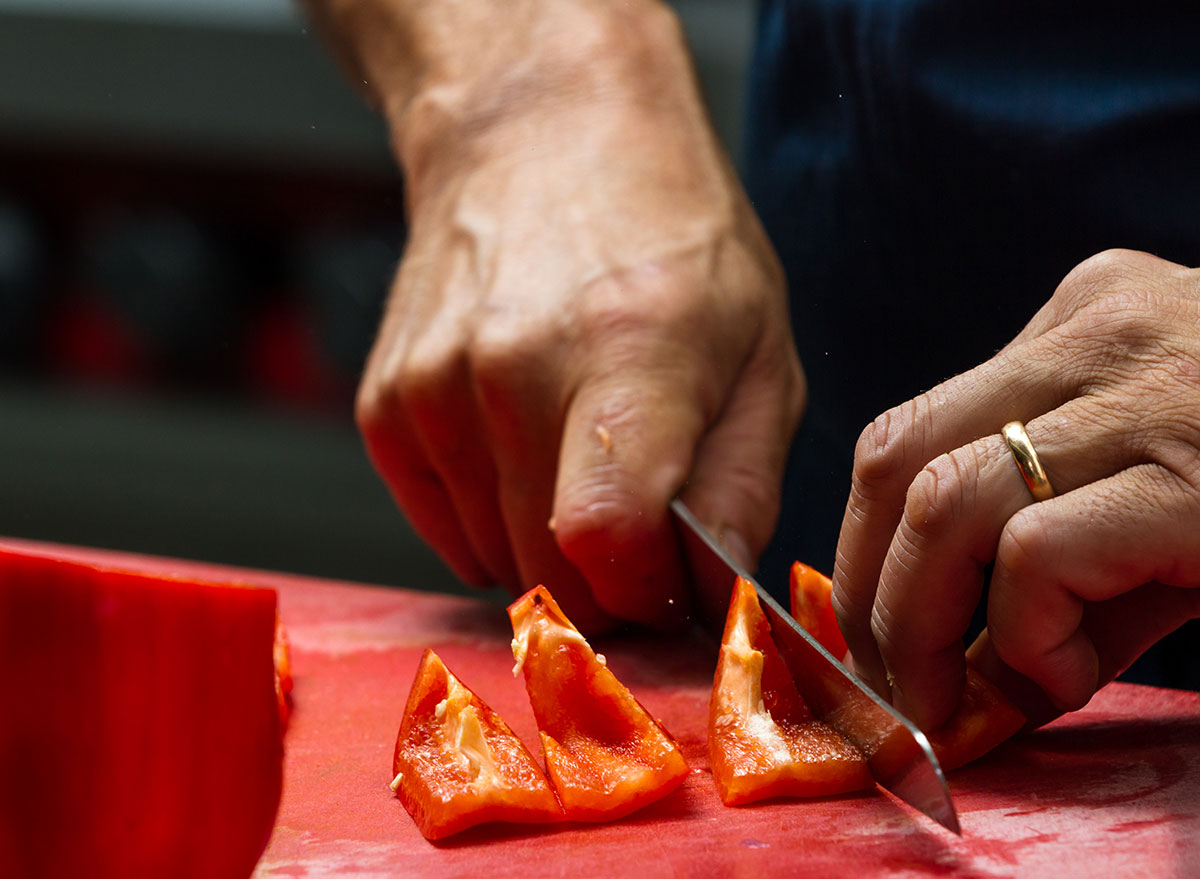
It shouldn't look like you're greeting a business partner when you're gripping your kitchen knife.
"I see a lot of amateur cooks holding the knife back on the handle, toward the middle, and gripping it like how you'd shake a hand," Crowley says. "You get more control if you use a pinch grip, meaning you hold the knife on the handle still, but up toward the blade, pinching the top of the blade with your thumb and pointer finger."
The three other fingers can wrap around the handle to grip. While this isn't ideal for every slice under the sun, it's best for most because it allows you to direct the knife precisely.
"This may feel unnatural at first. Over time, though, your knife will feel right at home there," Palafox adds. "Most quality knives are weighted in such a way that the blade of the knife is balanced with the handle. This balance point allows for comfortable, long-time use of the knife by allowing the weight of the knife to cut, as opposed to using the muscles of your arm to force through."
Mistake: Slicing on glass.
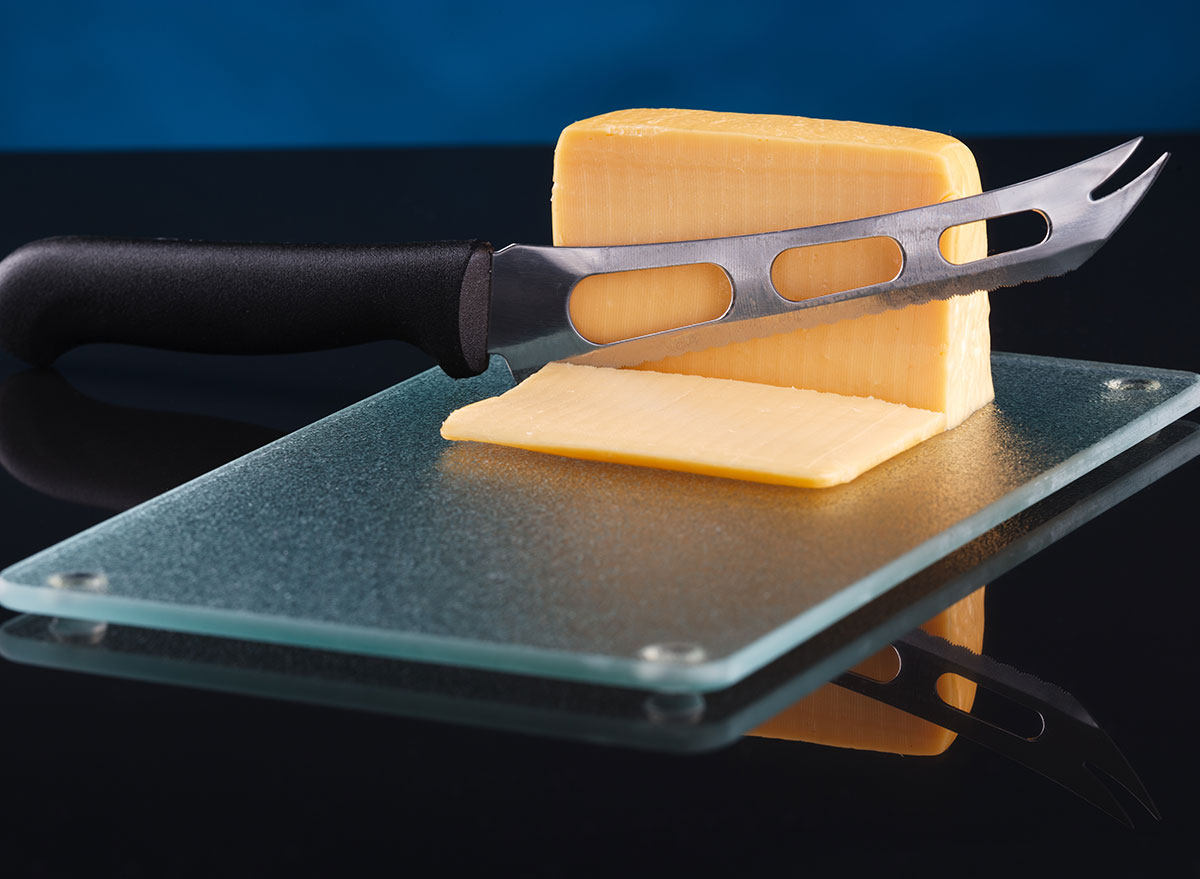
It actually does matter where you decide to get cutting. When it doubt, wood is the way to go.
"Wood cutting boards are my personal favorite," says Adam Merlin, chef at Cleo in New York City, who's particularly fond of John Boos butcher blocks. Segura also adores his wood cutting surface because it's dense and heavy, making it easy to slice steadily and safely.
"Whatever you do, definitely don't use a glass cutting board. They're so hard they will dull your knife in just a couple of swipes," Crowley says.
Mistake: Slicing on anything too tough.
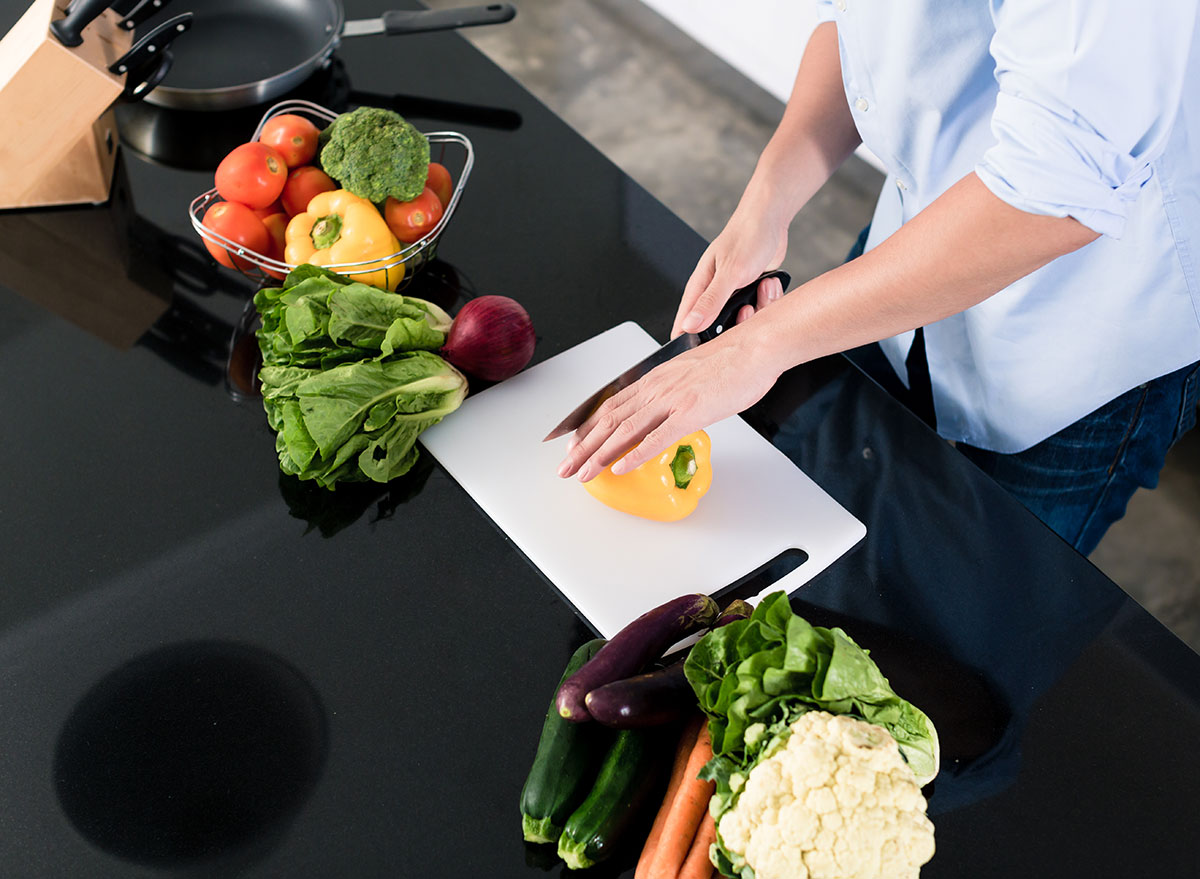
A glass surface isn't the only kitchen knife cutting no-no.
"Cutting on ultra-hard surfaces, such as stainless steel, marble countertops, or glass will cause the sharp edge of your knife to bend," Palafox says. "We often think of knives as getting dull. Typically, what is actually happening is that with repeated use, the sharp edge is rolled to the side to reveal an unsharpened bend."
Stick to wood or plastic, Palafox suggests, and find the sweet spot. The harder the wood or plastic is, the more the edge of the knife will roll. The softer it is, the longer you can go between honings, but the board will score more easily.
"Scoring in a cutting board reduces your abilities to properly sanitize between uses, since bacteria can settle into the grooves made by the knife. Wood, in particular, is susceptible to this since it's porous. Typically, in a commercial kitchen, you will see composite fiber cutting boards, which are knife-friendly and resistant to scoring. A win-win!" Palafox says.
Mistake: Using the wrong kitchen knife for the job.
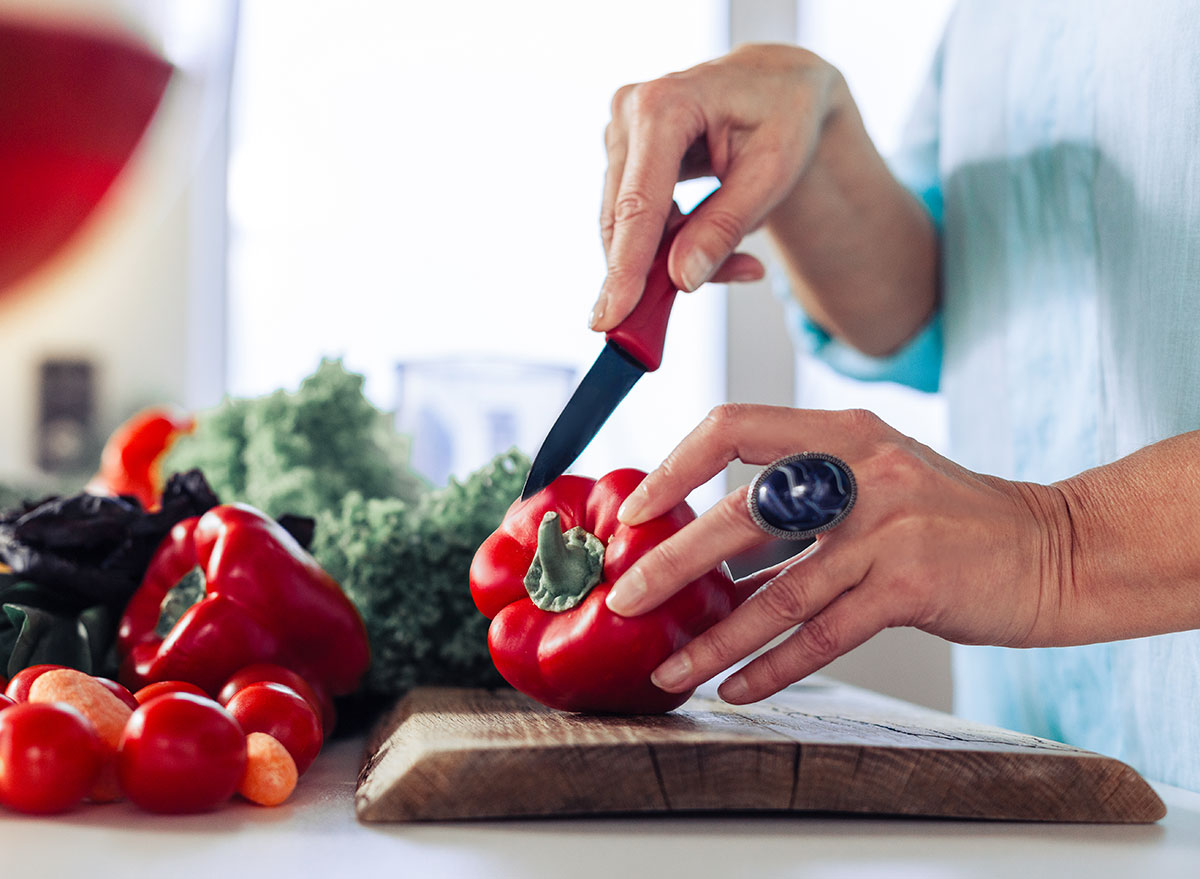
Just as every ingredient adds a layer of flavor to a recipe, each kitchen knife has a reason.
"Use a knife for its specific function. Every knife is made for a specific job, either to cut bread, meat, or cheese, and it should be used for that," says Mario Segura, chef at Umami Burger in Los Angeles, California.
Merlin recommends reading a book or a handy how-to training online to learn each particular knife's proper project.
Mistake: Letting food pieces dry on your kitchen knives.
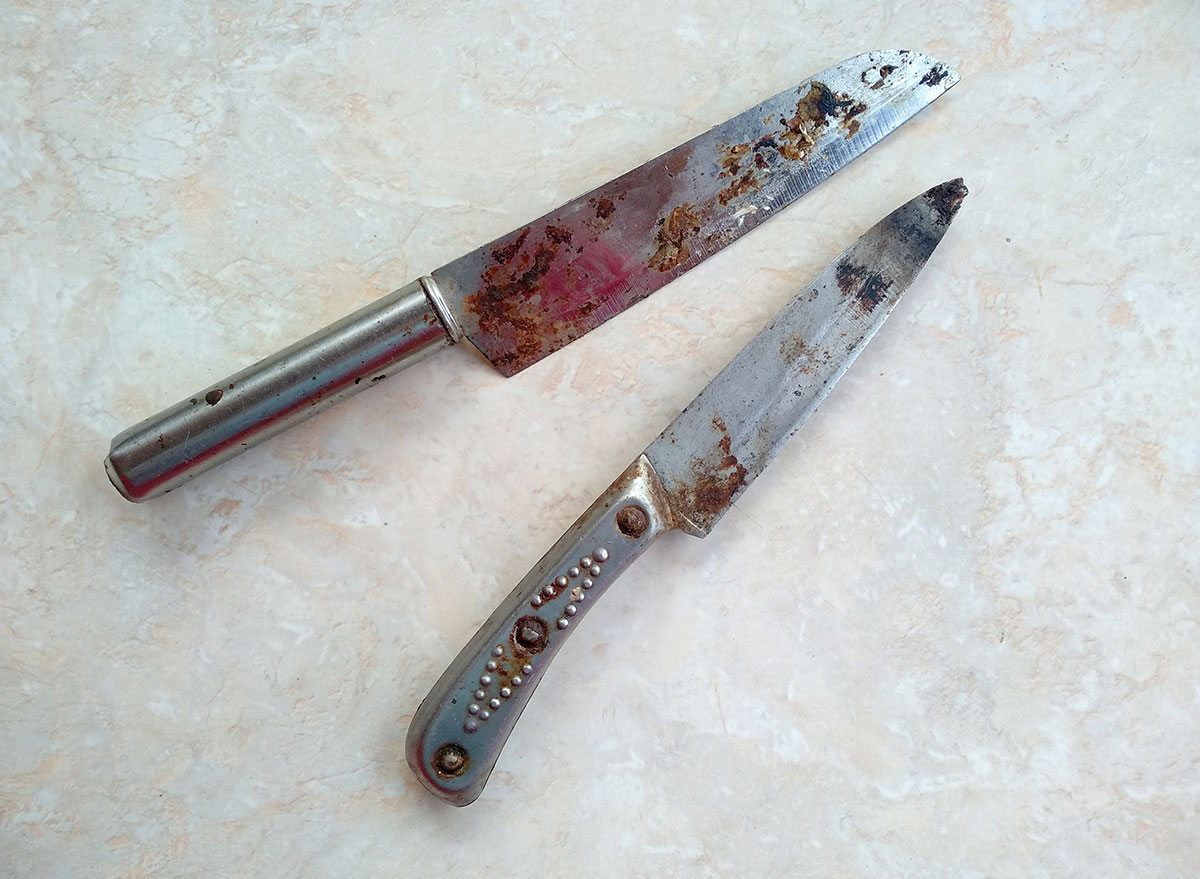
Sorry to break this one to you, but don't procrastinate on post-meal cleaning.
"Knives should always be rinsed and washed immediately after use. When food dries onto your knife, you have to work much harder to scrub it off," Palafox says. "Scrubbing your knife can compromise the sharp edge, and, more importantly, can be dangerous."
Mistake: Cleaning your kitchen knives in the dishwasher.
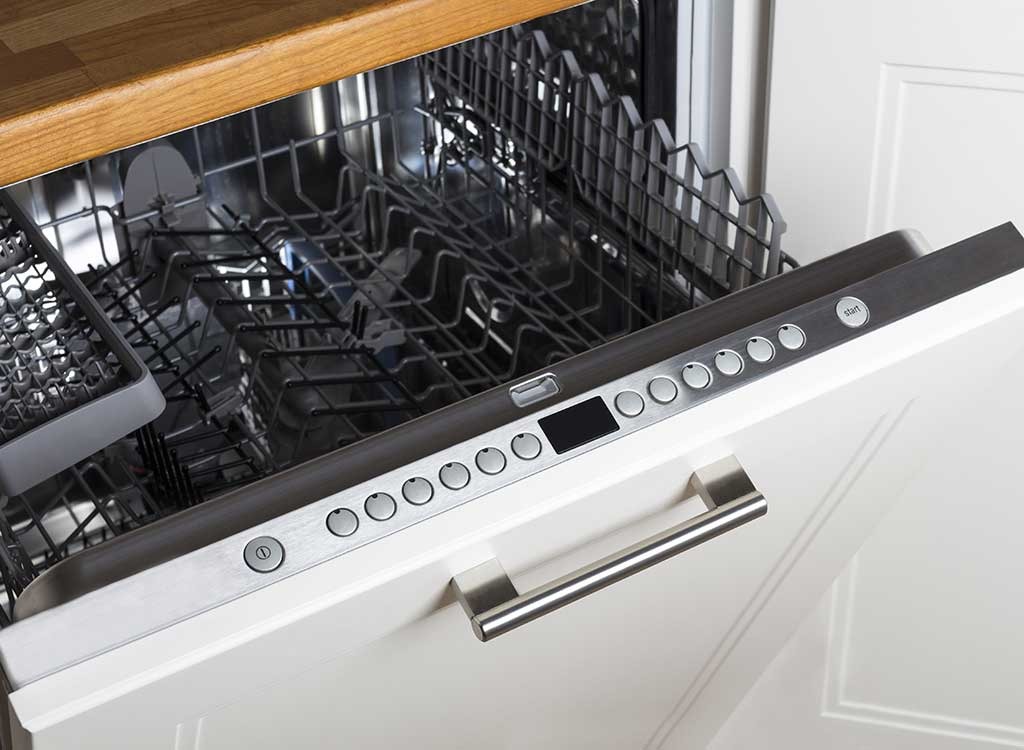
The best tools to keep your knives clean and in mint condition can be found at the end of your arms. The typical dishwasher detergent is very abrasive (to dislodge those extra bits of mac and cheese off your plate) and the jets spray hot water powerfully, which makes the dishwasher a no-fly zone for knives, Palafox says.
"Hand-washing is best since the dishwasher can dull knives," Crowley says. If you must pop them in the dishwasher, "don't put them in the utensil holder of your dish rack, as this can dull the edge and put pressure on the tip. It also makes it more likely that someone will cut themselves while they're putting the dishes away."
Palafox seconds that: "I have seen more chefs, dishwashers, and home cooks be injured by a knife during the cleaning process than I have while cooking!"
Mistake: Putting kitchen knives away while they're still wet.
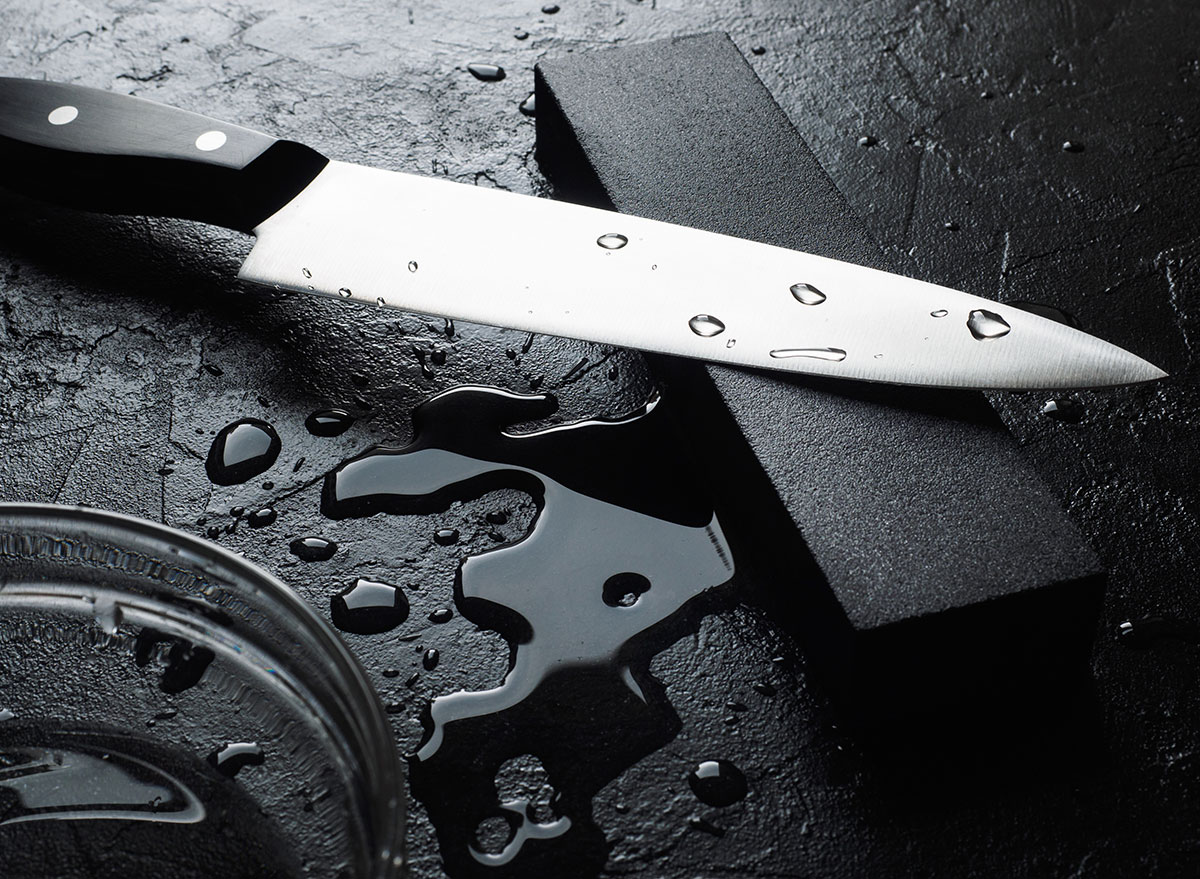
Similar to your cast-iron skillet, be sure to towel your knives off before storing.
"The humidity causes the knives to rust. Wash by hand, then dry immediately to prevent dullness and rust," Segura says. Give it a thorough dry, then slip into a knife sheath if you have one, Merlin recommends.
Mistake: Storing kitchen knives floating in a drawer.
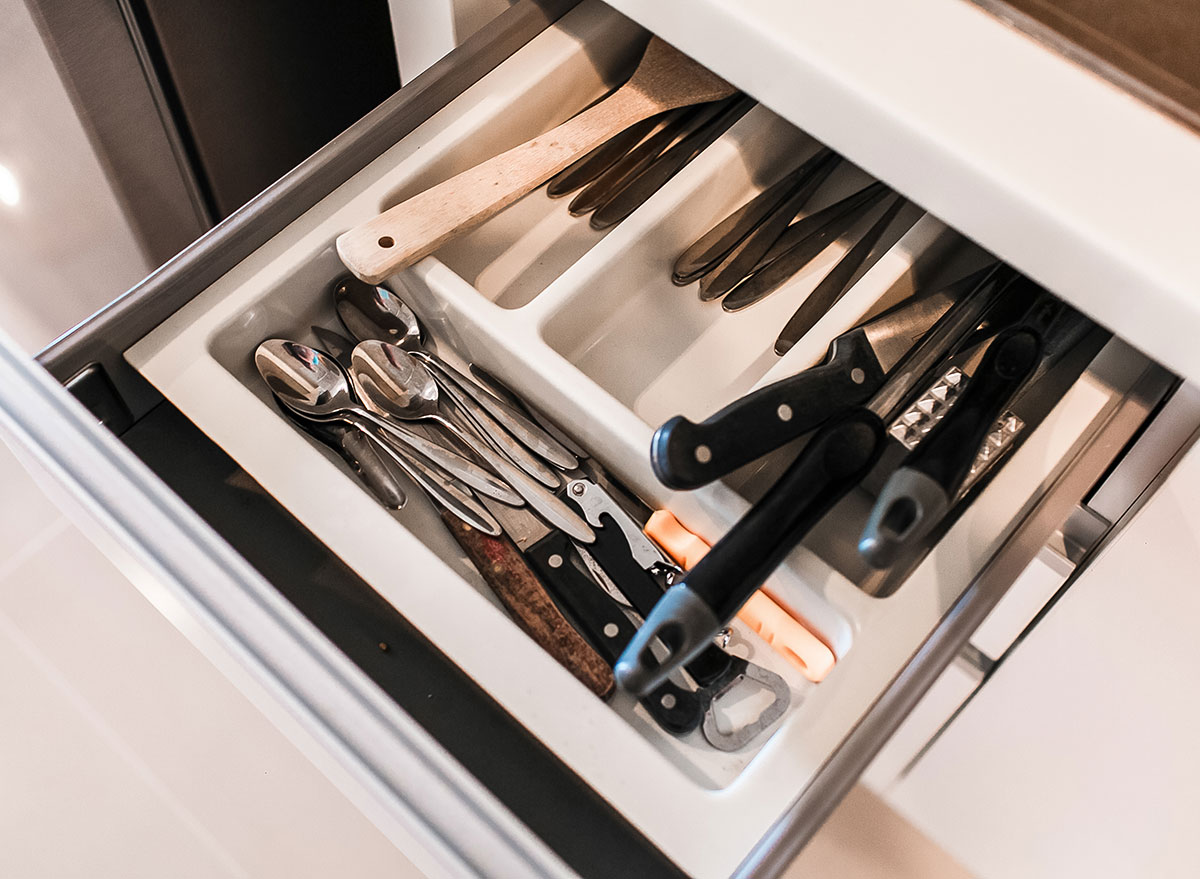
Crowley and Palafox both prefer to store their knives on a magnetic strip adhered to the wall.
"The knives can perch right on the strip, so you don't have to worry about them getting banged up in a drawer or cutting yourself when you're rummaging around. Also, they look cool all lined up," Crowley says.
"Knife blocks are fine, but when you buy a knife set, it often comes with a bunch of random knives that you don't need, so we typically prefer to assemble our own sets, and store them either on magnetic strips or in a universal knife block."
Mistake: Using kitchen knives for non-cutting duties.
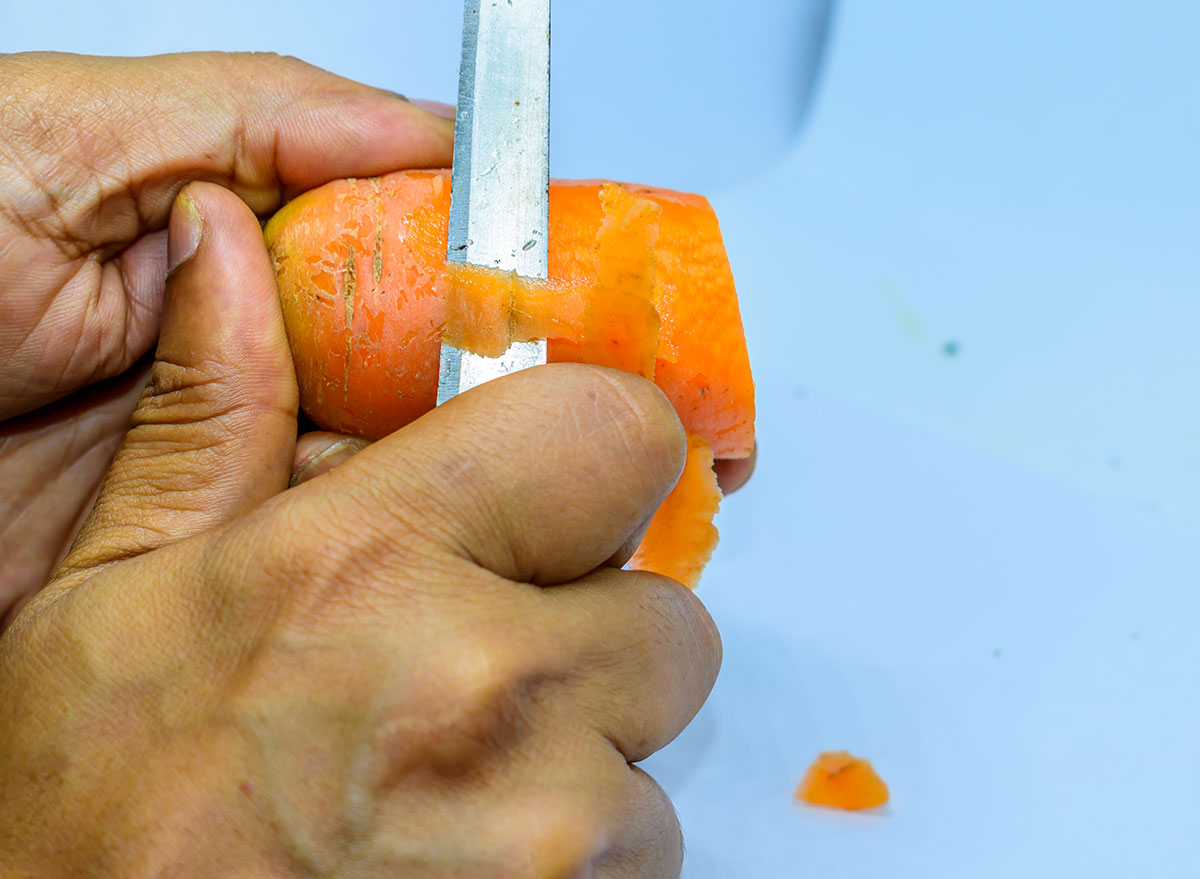
Sure, it's quick and easy to slice open a cardboard box or plastic bag with a kitchen knife, but that doesn't mean you should do it. These non-food slices can dull or harm your knife in an instant. Stick to basic scissors—not your kitchen shears— for a safer and smarter option.
Mistake: Dropping your kitchen knives.
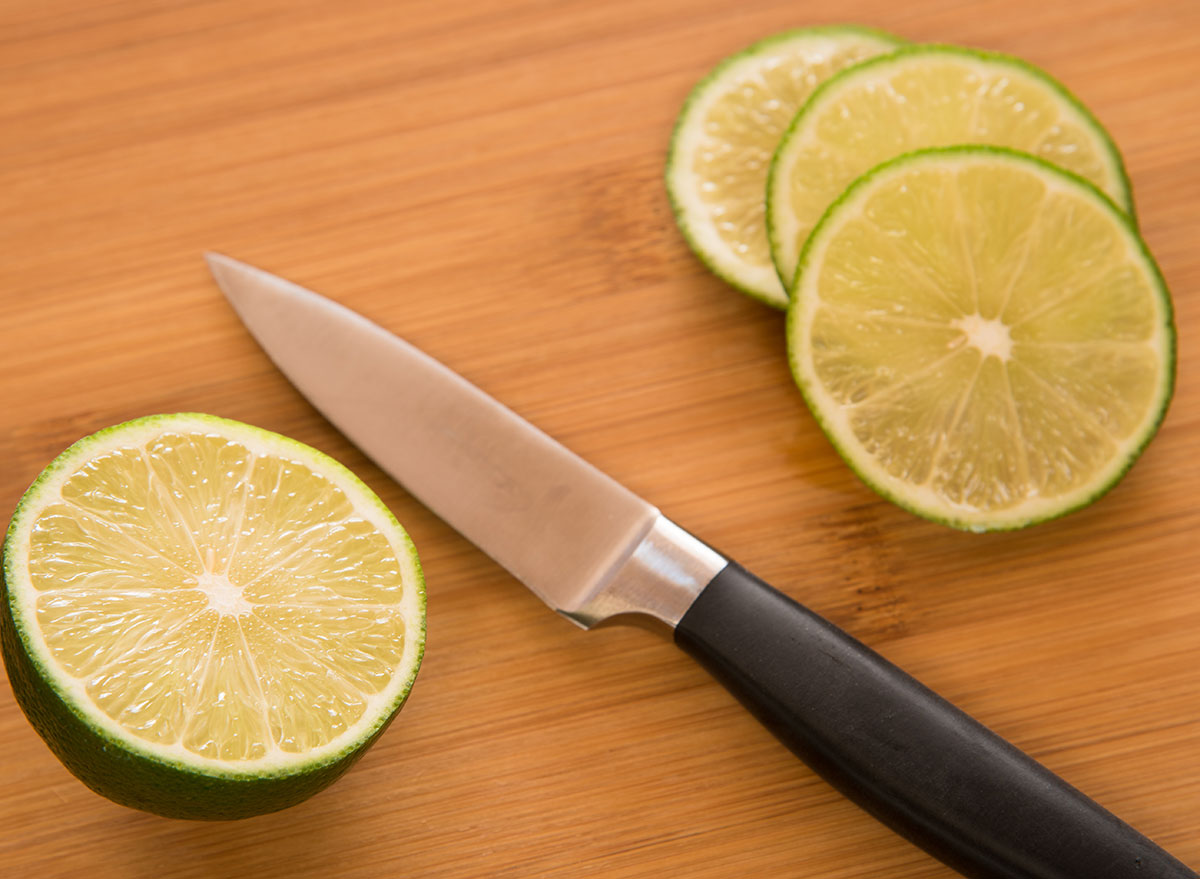
Keep your toes attached and your shoes spiffy by controlling your knife. By employing the grip tips we mentioned before and cutting carefully, you can avoid the biggest mistake of all: Dropping the kitchen knife on the floor (or worse, your foot) and dinging your knife in the process.
